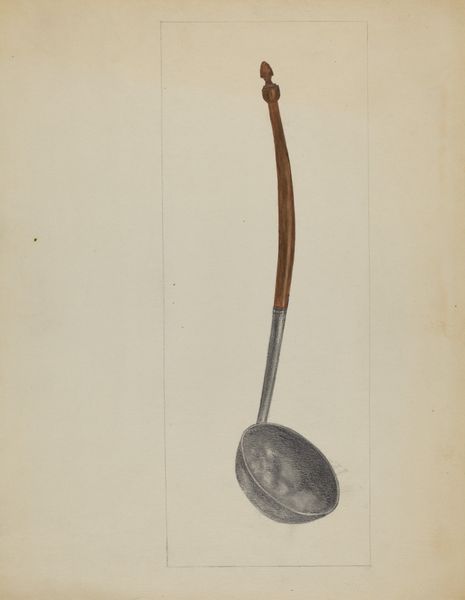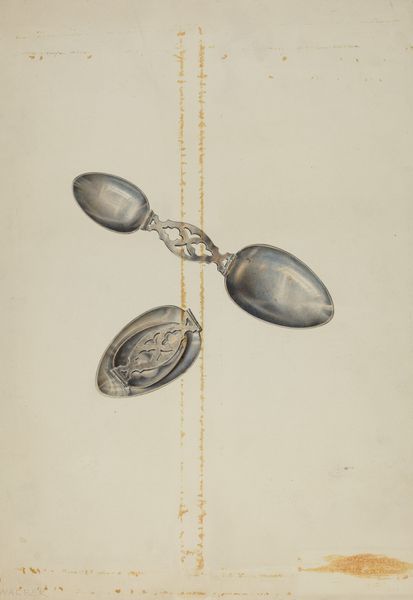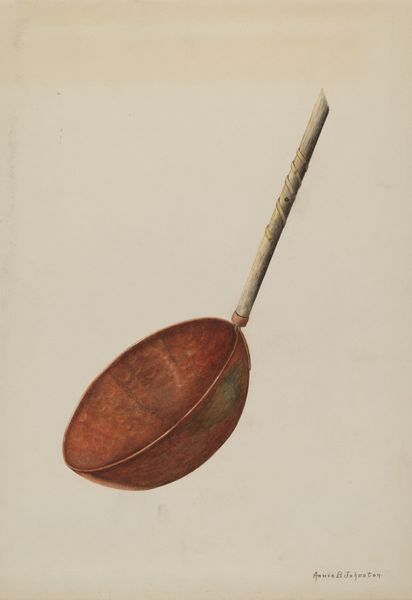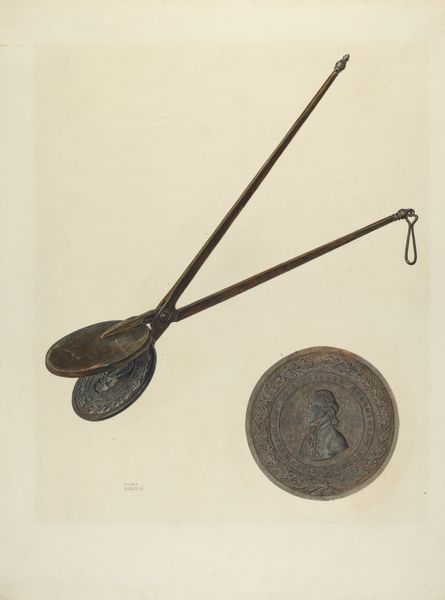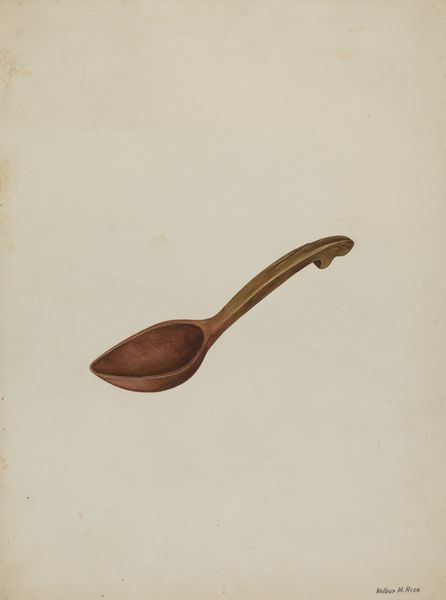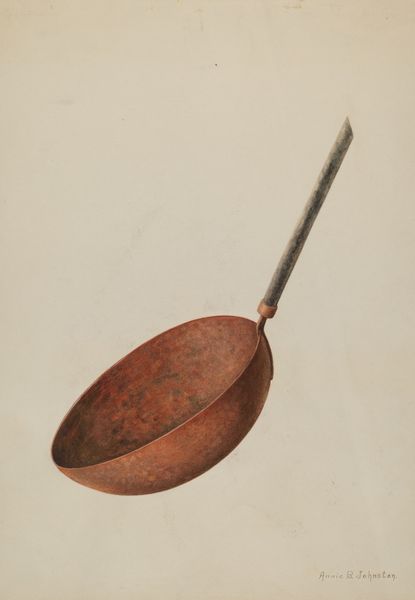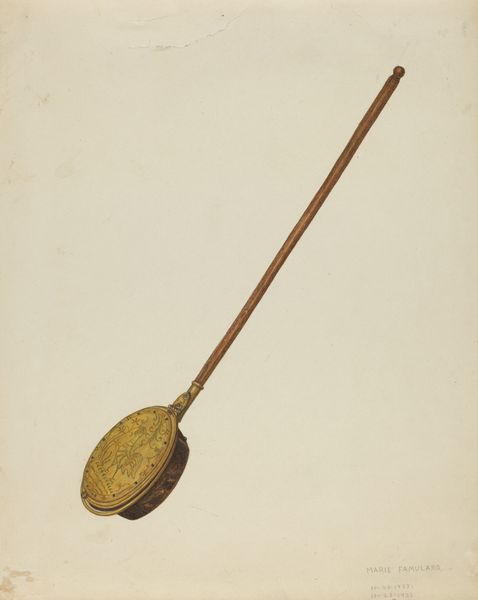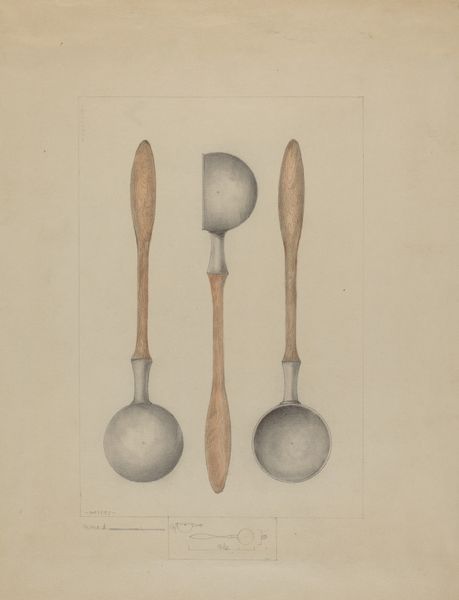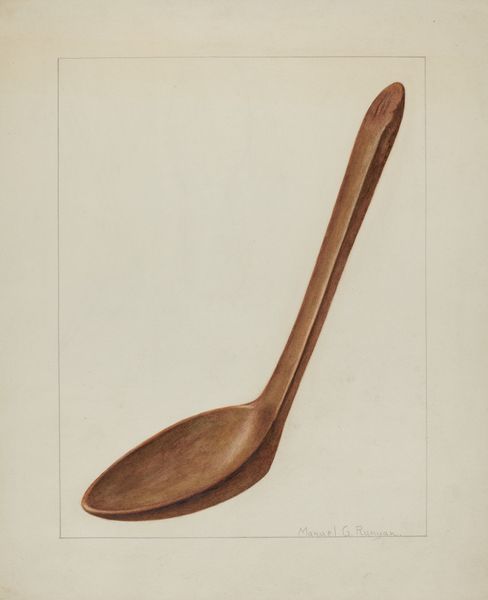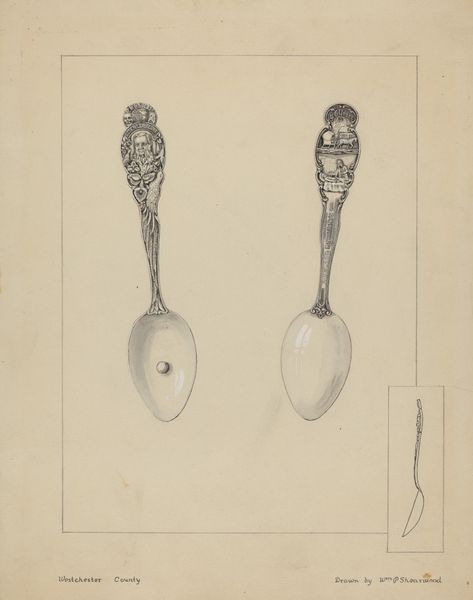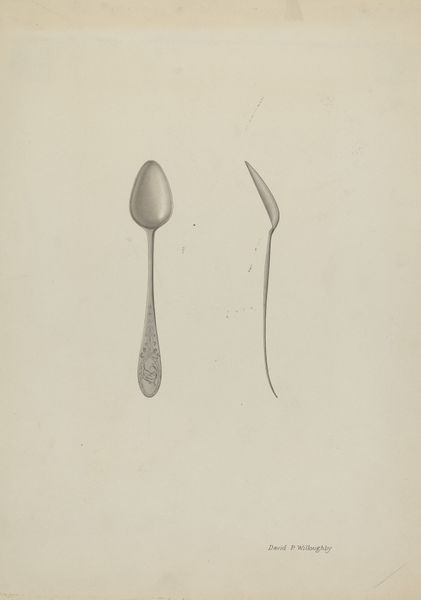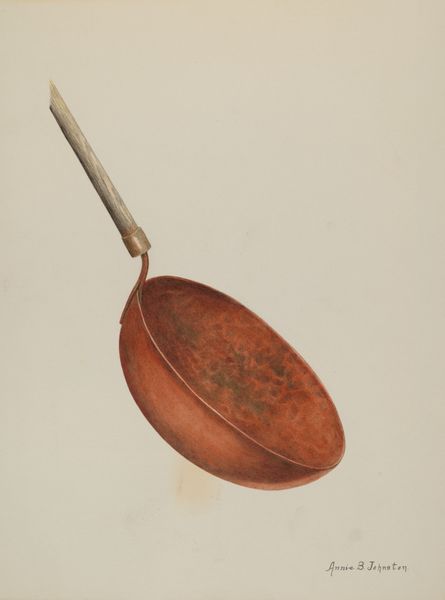
drawing, watercolor
#
drawing
#
watercolor
Dimensions: overall: 24.2 x 35.5 cm (9 1/2 x 14 in.)
Copyright: National Gallery of Art: CC0 1.0
Curator: This watercolor and graphite drawing is called "Rug Hooks" and was created around 1941 by Mary Fitzgerald. What are your first thoughts on the piece? Editor: There’s a kind of quiet simplicity here. The composition, a vertical stack of utilitarian objects, is quite striking, focusing your attention on line, shape and form. There’s not a lot of dynamism; the colors and textures seem muted. Curator: Absolutely, and understanding the object represented here is important. The rug hook allowed for the repurposing of textiles, typically scraps of fabric, clothing, and worn household items into something new. Fitzgerald is depicting tools of domestic labor, transforming the scraps of capitalism, the remnants of use, into aesthetic order. Editor: I appreciate that context. The rendering itself is precise; the wooden handles have a beautiful tonal range, contrasting with the sharp lines of the metal hooks. Tell me, does her process reflect these means of production that you've been talking about? Curator: Fitzgerald’s technique and skill, though seemingly straightforward, also speak to this transformation, highlighting labor through representation and elevating utilitarian objects into something of aesthetic value. Editor: Well, I must say, for me, Fitzgerald transforms these mundane objects through a studied sense of balance and composition into pure form. Her controlled watercolor washes give the drawing a tactile quality, hinting at the textures of the wood and metal. I like the negative space. Curator: What I think we’re seeing is Fitzgerald taking the very materials and the means of production from craft traditions and presenting it on par with "high art." We cannot disassociate her artwork with its historical context: craft production, textile consumption and the work inherent in creating art or rugs! Editor: It’s remarkable how Fitzgerald draws attention to everyday beauty. Focusing on formal and representational strategies opens a rich dialogue between art and lived experience, don't you think? Curator: Exactly! The artwork functions as both artifact and aesthetic experience. Editor: On the one hand we see an appreciation for visual economy; the other, for repurposed creation, and it is compelling. Thank you for sharing that with me. Curator: Likewise, our conversation really enlivens my appreciation for Fitzgerald's elegant aesthetic.
Comments
No comments
Be the first to comment and join the conversation on the ultimate creative platform.
